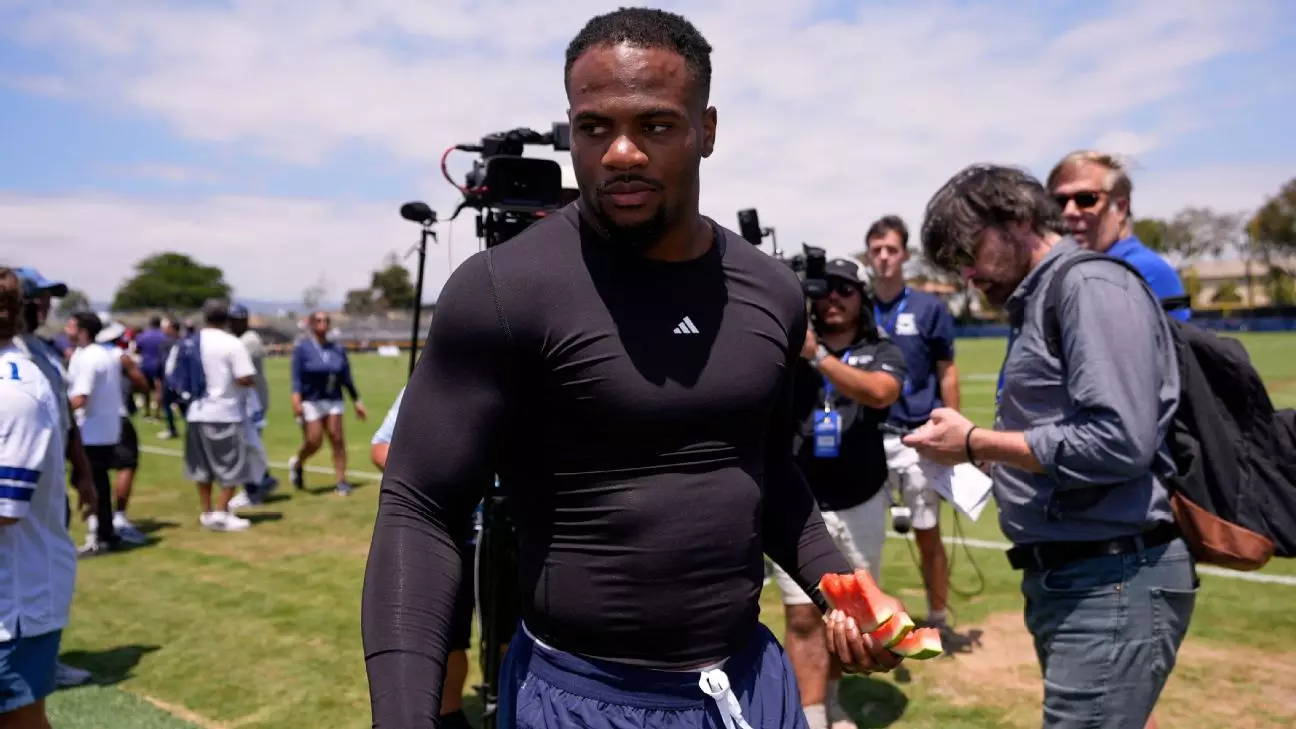In the realm of professional football, negotiations are often painted as straightforward dealings over contracts, guaranteed money, and team loyalty. However, beneath the surface, these negotiations are arenas of power battles, ego clashes, and strategic maneuvering. The recent saga involving Dallas Cowboys owner Jerry Jones and star linebacker Micah Parsons epitomizes this dynamic. Jones’s public assertions display a desire not only to secure the best deal for Parsons but also to assert his dominance and control over team decisions. His emphasis on managing the “check” versus Parsons’s role as a player underscores a fundamental tension: Who truly has the final say?
Jones’s claims of having offered the largest guaranteed money package for a defensive player highlight an aggressive stance, seeking to outbid external benchmarks such as Myles Garrett’s $123.5 million guarantee. Yet, his blunt commentary about the agent’s role and the dismissive tone when referencing the negotiations reveal a deeper frustration. It seems Jones perceives the contract dispute as a test of authority—where the alliance between ownership and player is subordinate to his overarching managerial control.
This situation is not merely about dollars; it reflects the ongoing power struggle within NFL organizations. The owners have historically been the ultimate decision-makers, wielding influence over player contracts, team strategy, and even league direction. However, star players like Parsons challenge this hierarchy by demanding respect, guaranteed financial security, and recognition of their value. When negotiations stall and public disputes emerge, it becomes a proxy war—an arena where ownership attempts to reassert dominance by framing negotiations as a matter of managerial authority rather than mutual respect.
Jones’s reference to handling the contract “like Dak” Prescott’s negotiations illustrates a perception that patience, leverage, and strategic delay are essential tools in maintaining control. Franchising and extending negotiations over years are tactics to remind players who holds the power, even as players demand their fair share. His candid comments about the agent “working for Micah” subtly diminish the agent’s role, reinforcing the narrative that negotiations are ultimately a matter of ownership’s terms.
The Symbolic Significance of Guaranteed Money in the NFL Power Hierarchy
One of the core issues driving tensions in this negotiation is the amount of guaranteed money. For Parsons, the guarantees are more than just financial; they represent recognition of his value and a contractual affirmation of his status as a franchise cornerstone. Jones’s willingness to offer near $200 million guarantees signals a strategic move to position Parsons among the league’s highest-paid non-quarterbacks—an elite status that comes with symbolic weight in the league hierarchy.
However, the reality is nuanced: guaranteed money often becomes a battleground for leverage. Other non-quarterbacks have the highest guarantees in the NFL, which puts pressure on teams to match or beat these benchmarks to retain star players. Yet, ownership’s strategy revolves around controlling costs and avoiding precedents that could spiral into escalating guarantees for other players, potentially destabilizing team budgets.
The assertion that Jones is content to let Parsons play under the franchise tag or the fifth-year option indicates a tactical approach: maintain negotiating leverage while keeping options open. This approach signals a willingness to confront star players with uncertain futures if they refuse to accept team-designed terms. It reveals that in the NFL, guaranteed money acts as a litmus test—either players accept a deal or risk playing on less secure contracts, thus reaffirming ownership’s dominance.
Jones’s boast about “managed deals” and the comparisons to Dak Prescott’s negotiations highlight an underlying philosophy: negotiations are less about fairness and more about maintaining a strategic advantage. The emphasis on “playing along” with team policies and procedures acts as a reminder that, ultimately, ownership’s authority prevails, and players are subordinate actors in a larger corporate hierarchy.
The Broader Implications: Leadership, Respect, and Power Dynamics in Football
The fallout from these negotiations extends beyond the specifics of contract figures. It sparks a broader conversation about leadership within NFL franchises and the degree to which players can challenge authority. Parsons publicly requesting a meeting with Jones about leadership issues, only to find negotiations turning into a contractual dispute, exemplifies how leadership struggles are intertwined with monetary negotiations.
Jones’s dismissive tone toward the agent and his suggestion that Parsons’s role is purely to “play football” oversimplify the player’s importance. It exemplifies an antiquated view—one that treats players as commodities rather than as vital partners whose voices must be heard. This attitude risks alienating star talent on a league-wide scale, especially as athletes have become increasingly aware of their marketability and leverage.
Furthermore, the public nature of these disputes feeds into the cultural narrative surrounding NFL teams: that they are companies driven by negotiation, strategy, and relentless pursuit of control. If ownership consistently resorts to delaying tactics, framing contracts as battles over authority rather than mutual agreements, it fosters a toxic environment where respect and collaboration are secondary to leverage.
In the end, negotiations such as this are more than purely financial transactions; they are battlegrounds that reflect deeper issues of respect, recognition, and leadership. As the NFL continues to evolve, perhaps the true question is whether ownership can shift from a control-based paradigm to one rooted in partnership and mutual growth—a transition that could redefine power dynamics for the better.


Leave a Reply